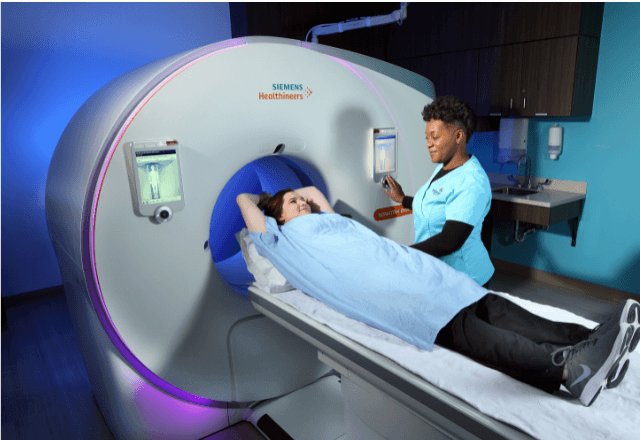Barium Swallow Radiology Testing in Veterinary Gastrointestinal Studies
The barium swallow radiology testing is a crucial diagnostic tool used to evaluate the upper gastrointestinal tract of animals, particularly for identifying issues related to dysphagia (difficulty swallowing), esophageal strictures or obstructions, and other anomalies. This non-invasive procedure allows veterinarians to visualize the esophagus and stomach with high clarity, providing critical information about the anatomy and function of these organs.
Barium swallow testing is performed by administering a contrast agent, barium sulfate, which is visible under X-ray imaging. The test helps in diagnosing various conditions such as esophageal motility disorders, esophagitis (inflammation), tumors, congenital anomalies like webbing or fistulas, and foreign body ingestion that might be causing gastrointestinal distress.
For a successful barium swallow study, proper specimen preparation is essential. Animals are typically fasted for 12 hours prior to the procedure to ensure clear visualization of the esophagus during the test. The veterinarian will instruct owners on any specific dietary or preparatory steps that may be necessary depending on the patient’s condition and history.
The actual procedure involves administering barium sulfate in small quantities, often mixed with water or another liquid, which allows the radiologist to observe the passage of the contrast agent through the esophagus. The patient is usually positioned in a way that facilitates optimal visualization, and multiple X-ray images are taken at various stages during the swallowing process.
After the test, the animal may need to stay under observation for a period until the barium has passed naturally. The veterinarian will then review the radiological images with the owner to discuss any findings and next steps in treatment or diagnosis.
| Procedure Steps | Description |
|---|---|
| Specimen Preparation | Fasting for 12 hours; dietary restrictions as advised by the vet. |
| Administering Contrast Agent | Barium sulfate mixed with water or another liquid, administered orally. |
| Positioning and Imaging | The animal is positioned for optimal visualization of the esophagus; multiple X-ray images are taken during the swallowing process. |
| Patient Monitoring Post-Procedure | The patient is observed until the barium has passed naturally. |
This detailed procedure ensures accurate diagnosis and helps in formulating appropriate treatment plans for animals with gastrointestinal issues. The test is particularly useful when other diagnostic methods such as endoscopy or ultrasound are not feasible or indicated.
Scope and Methodology
- Administration of barium sulfate contrast agent.
- Positioning the animal for optimal visualization during X-ray imaging.
- Taking multiple images throughout the swallowing process to capture the passage of the barium through the esophagus.
- Monitoring the patient post-procedure until the barium has passed naturally.
The methodology strictly adheres to international standards such as ISO 5416:2017 and ASTM E1316-19. These guidelines ensure the highest level of accuracy and reliability in the diagnostic outcomes.
The equipment used includes high-resolution X-ray imaging systems capable of capturing detailed images of the esophagus. The radiologists involved are highly trained professionals with extensive experience in veterinary radiology, ensuring the utmost precision and care during each test.
Benefits
The barium swallow radiology testing offers several benefits to both pets and their owners:
- Precise Diagnosis: Provides clear visual evidence of esophageal and gastric conditions, aiding in accurate diagnosis.
- Non-Invasive: Avoids the need for invasive procedures, reducing stress on the animal.
- Early Detection: Allows for early identification of potential issues, facilitating timely treatment.
- Patient Safety: Minimizes risks associated with more aggressive diagnostic methods.
- Cost-Effective: Often less expensive than other advanced imaging techniques or surgical interventions.
- Non-Radiation Exposure: Uses only low-dose X-ray exposure, minimizing radiation risk to the patient.
The test is a valuable tool in veterinary diagnostics, particularly for gastrointestinal issues where precise visualization of the upper tract is necessary. By combining this service with other diagnostic methods, veterinarians can provide comprehensive care tailored to each pet's needs.
Customer Impact and Satisfaction
- Ease of understanding test results through detailed reports and discussions between the radiologist and the owner.
- Peace of mind knowing that the animal is receiving thorough diagnostic care without invasive procedures.
- Speedy recovery, as non-invasive methods mean less stress for the pet post-procedure.
- Accurate diagnosis leading to effective treatment plans, improving overall health outcomes.
Customer satisfaction is a key priority. Our dedicated team of radiologists and support staff work closely with veterinarians and owners to ensure that each barium swallow test is conducted with the highest standards of care. Feedback from satisfied clients highlights the reliability and effectiveness of our service, reinforcing our commitment to quality in veterinary diagnostics.





